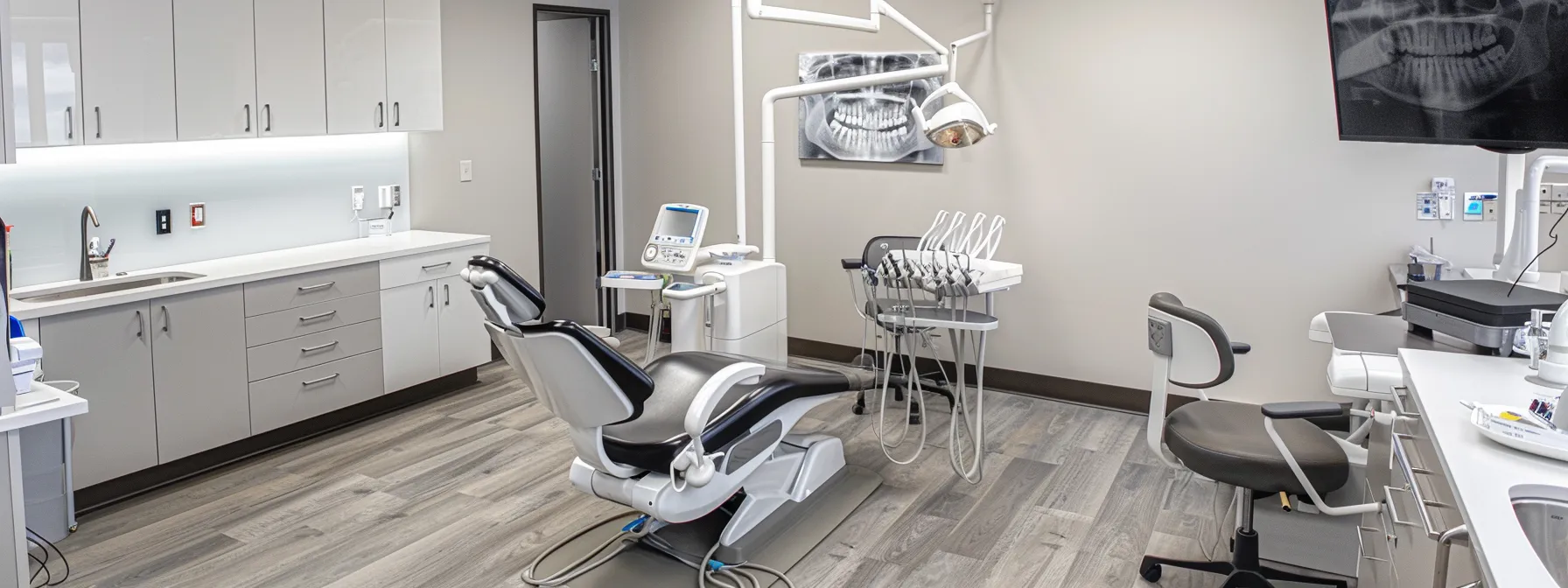Are you considering dental implant surgery but unsure of what to expect? You’re not alone; many people have questions about the procedure. This blog post explains the dental implant surgery procedure in detail. Readers will learn about the reasons for getting implants, how to prepare for surgery, the step-by-step process involved, and essential post-operative care tips. By the end, readers will feel more informed and confident about their decision, helping to alleviate concerns about the surgery and its outcomes. Let’s dive in!
Key Takeaways
- Dental implants provide a durable replacement option for missing teeth
- Proper oral hygiene is crucial for the longevity of dental implants
- A thorough consultation ensures the right type of implant is chosen
- Pain management techniques are vital during the surgical process
- Regular follow-ups with the dentist help monitor healing and implant integration
Overview of Dental Implant Surgery Procedure
Dental implants provide a durable solution for tooth replacement, and understanding this procedure is vital. The surgical process involves multiple steps, including effective pain management and sedation techniques to ensure comfort. Different types of dental implants are available, and key products and services, including the crown, will be covered to highlight their importance in restoration.
Understanding Dental Implants
Dental implants serve as a reliable option for those facing tooth loss, as they mimic the function and appearance of natural teeth. Understanding the importance of maintaining oral hygiene, including the use of mouthwash, is essential for the longevity of these implants. In the context of periodontology and orthodontics, a balanced diet also plays a crucial role, helping to ensure the success of dental implants and overall oral health.
The Surgical Process Explained
The surgical process for dental implants typically involves several steps designed to ensure a successful outcome. First, a stent may be used to guide the placement of the implant accurately into the jawbone, ensuring a secure foundation for chewing. During the procedure, the patient’s protected health information is taken seriously, and various pain management techniques are used to maintain comfort throughout the surgery.
- Initial consultation and evaluation
- Use of a stent for precise implant placement
- Importance of pain management techniques
- Securing protected health information
- Post-surgery care and follow-up
Types of Dental Implants
When it comes to dental implants, there are several types available that cater to individual needs, especially in the field of prosthodontics. Some common options include endosteal implants, which are surgically placed into the jawbone using a drill, and subperiosteal implants, positioned underneath the gum line but above the jawbone. A qualified surgeon will assess the best implant type based on the patient’s level of tooth loss, bone structure, and overall oral health to ensure a successful outcome.
Key Products and Services Related to Implants
Key products and services related to dental implants are essential for a successful restoration process. High-quality metal components are used for the implants themselves, ensuring durability and longevity. In addition, patients are often prescribed antibiotics after surgery to help prevent infection, highlighting the importance of following post-operative care, including maintaining good oral hygiene with a toothbrush. Visiting a bosque county dentist can provide tailored advice on specific products and services that support the overall health of dental implants, ensuring they remain functional and effective for years to come:
Reasons for Undergoing Dental Implant Surgery

Dental implant surgery serves multiple purposes. It significantly improves oral functionality, allowing individuals to eat and speak without pain or discomfort related to tooth loss. In addition, dental implants enhance aesthetics, boosting confidence with a natural-looking smile. Temporary crowns and crowns play a vital role in this process, as they are designed to address tooth loss while ensuring comfort and preventing nerve-related issues during recovery.
Improving Oral Functionality
Improving oral functionality is one of the primary reasons individuals opt for dental implant surgery. When a tooth is lost due to tooth decay or other diseases, it can lead to difficulty in chewing and speaking, affecting one’s quality of life. Dental implants function as prosthesis, providing the necessary support for a graft that integrates with the jawbone, ensuring stability and comfort while allowing for normal oral activities. With proper care and regular exams, dental implants can significantly enhance a person’s ability to eat, smile, and interact confidently, addressing both functional and aesthetic needs.
Enhancing Aesthetics and Confidence
Enhancing aesthetics and confidence is a significant reason many individuals choose dental implant surgery. After a thorough evaluation of their medical history, patients find that successful osseointegration of the implant in the maxilla can restore their smile beautifully. The results not only improve physical appearance but also boost self-esteem, allowing individuals to interact more freely and confidently in social situations.
- Dental implants mimic the look of natural teeth, improving smile aesthetics.
- Successful osseointegration offers a stable foundation for implants.
- Patients feel more confident engaging with others post-surgery.
- A thorough evaluation of medical history helps ensure successful outcomes.
Addressing Tooth Loss
Addressing tooth loss with dental implants can significantly improve a person’s quality of life. By restoring missing teeth, individuals can regain the ability to chew and speak comfortably, which directly enhances their confidence. Furthermore, following the procedure, patients often receive medication to manage any discomfort and may find that therapy is beneficial for adapting to their new implants, as they also provide support for the surrounding tissue and gums, promoting better overall oral health.
Preparing for Dental Implant Surgery
Before undergoing dental implant surgery, it’s essential to prepare adequately. This includes the initial consultation steps, where the dentist assesses the patient’s needs and discusses options. Diagnostic imaging helps in planning the procedure effectively, and understanding bone grafting might be necessary for optimal placement. Pre-surgery instructions regarding anesthesia and post-op care ensure the best outcomes for patients, paving the way for a successful implant and abutment placement.
Initial Consultation Steps
The initial consultation is a crucial step in preparing for dental implant surgery. During this appointment, the dentist will evaluate the patient’s jaw structure and discuss health history, ensuring that any potential issues like the need for a sinus lift are addressed. The importance of hygiene will also be emphasized, with recommendations on rinsing and maintaining oral care, which contribute significantly to a successful implant procedure.
Diagnostic Imaging and Planning
Diagnostic imaging plays a vital role in preparing for dental implant surgery, as it allows the dental team to evaluate the jawbone and surrounding structures thoroughly. This evaluation helps identify any potential complications, such as bleeding or insufficient bone density, which may require additional procedures like bone grafting. Patients are often guided on how to maintain optimal oral hygiene leading up to the surgery, including the use of dental floss to keep the area clean and reduce infection risks:
- Assessment of jawbone structure
- Identification of potential complications
- Need for bone grafting if required
- Importance of oral hygiene practices
- Utilization of effective imaging techniques
Understanding Bone Grafting if Needed
Bone grafting is sometimes needed to ensure there’s enough bone density to support a dental implant. This procedure adds bone in areas where it’s thin or missing, creating a solid foundation for the implant. A qualified dentist will assess the patient’s jawbone during the initial consultation and determine if bone grafting is necessary, making sure the implant has the best chance of success for long-term oral health.
Pre-Surgery Instructions
Before undergoing dental implant surgery, patients should follow specific pre-surgery instructions to ensure a smooth experience. This includes arranging for someone to drive them home after the procedure, as sedation will likely be used. Patients are also advised to avoid eating or drinking for a certain period before surgery, as this helps reduce the risk of complications during anesthesia and contributes to a more comfortable recovery.
Detailed Steps in the Surgery Procedure

The dental implant surgery involves several important steps to ensure a successful outcome. Initially, anesthesia is administered for patient comfort during the surgical placement of the implant. If necessary, bone grafting may occur to provide a solid foundation, followed by a healing period. Once healed, the abutment is placed, and finally, the crown is fitted to complete the restoration process.
Anesthesia and Patient Comfort
Before starting the dental implant surgery, the dental team prioritizes patient comfort by administering anesthesia. This step is crucial because it helps alleviate any pain or discomfort during the procedure, allowing patients to feel at ease while the dentist works. Understanding the type of sedation options available can help alleviate anxiety and make the experience much more manageable for patients, ensuring they have a smooth surgery.
Surgical Placement of the Implant
The surgical placement of the implant is a crucial step in the dental implant process. The dentist carefully makes a small incision in the gum tissue to expose the bone, ensuring a clean area before drilling a precise hole where the implant will be inserted. This placement is vital for the stability and functionality of the implant, setting the foundation for a strong restoration that mimics natural teeth:
- The dentist makes an incision in the gum.
- Bone is prepared for implant placement.
- The implant is securely placed in the drilled site.
Possible Bone Grafting and Healing Duration
Bone grafting may be necessary during the dental implant surgery if there is insufficient bone density in the jaw to support the implant. This process involves adding bone material to the area, providing a solid foundation for the implant. Healing after bone grafting can take several months, as the new bone needs to integrate with the existing jawbone before the implant can be placed. This period is essential for ensuring long-term success and stability of the implant, allowing patients to enjoy their restored smiles for years to come:
- Bone grafting may be required for adequate jaw support.
- Healing duration can vary, often lasting several months.
- Integration of new bone is crucial for implant stability.
Abutment Placement Process
The abutment placement process is a key step in the dental implant surgery, occurring once the implant has fully integrated with the jawbone. During this phase, the dentist attaches a small connector, called an abutment, to the top of the implant. This piece serves as the foundation for the crown, and its secure placement is vital for ensuring a proper fit and functionality of the final restoration, allowing the patient to enjoy a comfortable and natural-looking smile.
Fitting the Crown
Fitting the crown is the final step in the dental implant surgery process, where the dentist places a custom-made crown onto the abutment. This crown is designed to match the shape and color of the patient’s natural teeth, ensuring a seamless appearance. Once in place, the crown not only completes the restoration but also allows patients to enjoy normal chewing and speaking functions with confidence.
Post-Operative Care and Recovery

After dental implant surgery, managing discomfort and pain is key for a smooth recovery. Patients should prioritize maintaining oral hygiene to prevent infections that could jeopardize their implants. Regular monitoring of healing progress and attending follow-up appointments with the dentist ensure everything is on track. Each of these components plays a vital role in achieving successful and lasting results.
Managing Discomfort and Pain
After dental implant surgery, managing discomfort and pain is essential for a smooth recovery. Patients are often advised to take prescribed pain medications as needed to alleviate any discomfort. Regularly applying ice packs to the surgical area can also help reduce swelling and provide relief, making the recovery process more comfortable for individuals.
Maintaining Oral Hygiene After Surgery
After dental implant surgery, maintaining oral hygiene is crucial for a successful recovery and the longevity of the implants. Patients should gently brush around the surgical site with a soft-bristled toothbrush to avoid irritation while also using an antimicrobial mouthwash to reduce the risk of infection. It’s important to regularly check in with the dentist for follow-up appointments, as personalized advice on caring for the new implants can help patients feel more confident during the healing process.
Monitoring Healing and Follow-Up Appointments
Monitoring healing after dental implant surgery is vital for a successful recovery. Patients should attend follow-up appointments with their dentist to assess how well the implants are integrating and to ensure there are no complications, such as infection. This regular check-in allows the dentist to provide tailored advice on oral care and adjust post-operative instructions as necessary:
- Schedule follow-up visits as advised by the dentist.
- Report any unusual discomfort or signs of infection promptly.
- Adhere to the dentist’s recommendations regarding oral hygiene.
Expected Outcomes and Long-Term Results
Success rates for dental implants are high, often exceeding 95%, making them a reliable choice for tooth replacement. These implants can last many years with proper care. However, potential complications, such as infection or issues with integration, are important to consider. The following sections will delve into these aspects, highlighting the longevity and challenges associated with dental implants.
Success Rates of Dental Implants
Dental implants boast impressive success rates, often exceeding 95%, which makes them a dependable choice for those looking to replace lost teeth. This high rate can be attributed to advancements in dental technology and techniques that have improved the surgical process and overall care. With proper maintenance and regular dental check-ups, many patients enjoy their implants for many years, making them a worthwhile investment in oral health and quality of life.
Longevity of Dental Implants
Dental implants can last many years, often providing a durable solution for tooth replacement. With proper care, including regular dental check-ups and effective oral hygiene practices, patients can enjoy their implants for a lifetime. It’s essential for individuals to understand that the longevity of dental implants also depends on factors like bone health and lifestyle choices, making ongoing care vital to maximizing their investment in oral health.
Potential Complications to Be Aware Of
While dental implants offer a fantastic solution for tooth loss, potential complications can arise that patients should be aware of. These may include infection at the implant site, which can hinder healing and, in some cases, lead to implant failure. Additionally, improper integration with the jawbone, known as failure of osseointegration, can occur if there’s insufficient bone density or other underlying issues, making it essential for patients to maintain regular check-ups and follow post-operative care recommendations from their dental professional.
Conclusion
Understanding the dental implant surgery procedure is crucial for anyone considering tooth replacement options. This comprehensive approach not only emphasizes the importance of proper planning, consultation, and post-operative care but also highlights the role of dental implants in enhancing functionality and aesthetics. By following the recommended steps and maintaining good oral hygiene, patients can ensure the long-term success of their implants. Ultimately, dental implant surgery offers a reliable solution that significantly improves quality of life and boosts confidence.
Dr. Scott Kennedy and the team at Dynamic Family Dentistry are here to help you achieve the bright, confident smile you’ve always wanted. Book a consultation today to learn more about cosmetic teeth whitening in Clifton, TX, and take the first step toward a radiant smile!
Schedule an Appointment
Dynamic Family Dentistry
302 S. Avenue Q, Clifton, Texas Driving Directions
Related Articles
Dental Implants 101, Cost of Dental Implants, Post-Surgery Care for Dental Implants, The Dental Implant Procedure, The Benefits of Implants, What to Expect with Implant Surgery


